By Pierce Salguero with Jason Lee
Chiang Mai is a center for the study and practice of traditional medicine of all types. There are doctors of Thai Traditional Medicine (TTM), Chinese medical schools, and more massage clinics per square kilometer than anywhere else in the country. Among these, the Shivagakomarpaj Traditional Medicine Hospital was the pioneer.
This facility, commonly known by its nickname “Old Medicine Hospital,” was the first TTM institution in Chiang Mai to open its doors to Western tourists wishing to learn Thai massage. Their 10-day course continues to be the best introductory class in Thai massage around. For those who speak Thai fluently, the hospital offers formal training programs in traditional Thai medicine which result in national licensure.
The institution is part of a non-profit charitable endeavor known as the Shivagakomarpaj Foundation, which provides free healthcare to neighboring villages around Chiang Mai on Buddhist holidays. Six times per year, the entire staff—including Western students—piles into vans and heads out into the countryside to treat the villagers with herbs and massage.
Shivagakomarpaj’s main focus, however, is as a traditional hospital. Patients are treated with massage, saunas, and traditional herbal remedies by mo boran (traditional doctors), and can receive the entire range of traditional Thai therapies under one roof. As mentioned in the introduction, the three branches of Thai medicine are represented in the very architecture of the hospital itself.
The founder of the Old Medicine Hospital was Ajahn[1] Sintorn Chaichakan who studied traditional Thai medicine at Wat Pho in the late 1950s. Upon completing the degree in 1958, he stayed on as a teacher for four more years. Before that time, Wat Pho did not teach Thai massage, and at the personal request of King Rama IX, Ajahn Sintorn was instrumental in starting the massage program to complement the herbal training Wat Pho had offered for many years.
In 1962, he returned to Chiang Mai and began to practice medicine at small dispensaries on the grounds of several city temples. At this time, the government of Thailand was only interested in supporting Western medicine, and Thai traditions were kept alive by their association with Buddhist institutions. Back in the north of Thailand, Ajahn Sintorn adapted his practice of massage and herbal medicine to incorporate aspects of northern culture. One important change he made to the Wat Pho massage routine was to slow it down, he says to suit the “laid-back style” of Chiang Mai natives. He also focused on local herbal knowledge, incorporating treatments that were not part of the Wat Pho tradition into his pharmacopoeia.
In 1973, Ajahn Sintorn purchased land just outside of Chiang Mai center and established the current hospital. With only a small grant from the government to start up, the facilities were quite small at that time, with only 10 hospital beds. From these humble beginnings, the hospital grew to the current size. In the 1990s, the program graduated an average of 60–70 Thai students per year in traditional medicine, and the Western students in short courses on Thai massage numbered well into the hundreds.
In the last two decades, the hospital has lost ground to both Western medical hospitals (several of which have opened up in the city, offering world-class services) and the dozens of massage clinics and day spas that have sprung up around Chiang Mai to meet tourist demand. Along with Wat Pho, the Old Medicine Hospital is part of both national and regional efforts to standardize and regulate the massage industry, to improve safety and authenticity of traditional healthcare in the years to come.
Ajahn Sintorn remained the director of the Old Medicine Hospital facility until his passing away on October 19th 2005 and the hospital is currently directed by his son, Wasan. As the next generation has managed the hospital’s affairs, some changes (such as a new website) have been made to help the hospital compete for students and clients in the modern marketplace. Nonetheless, the institution continues to adhere closely to the Thai model of healthcare.
Many of the photos below come from a special version of wai khru, a ceremony that honors the lineage of teachers within the school held on the fiftieth year anniversary of the Old Medicine Hospital in 2012 (Salguero 2017). Initiating the ceremony with a series of Buddhist chants, a group of senior monks recited verses in Pāli to pay homage to Buddha, Dhamma, and Sangha. In turn, the director chanted verses that honored Jivaka and performed a series of rituals that serve to allow practitioners from throughout the city to feel the presence of and connect with the lineage of teachers. As such, beyond giving thanks to past generations of teachers, the ceremony was also a key event in which the director asserted his position as the legitimate inheritor of his father’s lineage and facilitated social cohesion by connecting the various groups of Chiang Mai healers (Salguero 2017).
Media
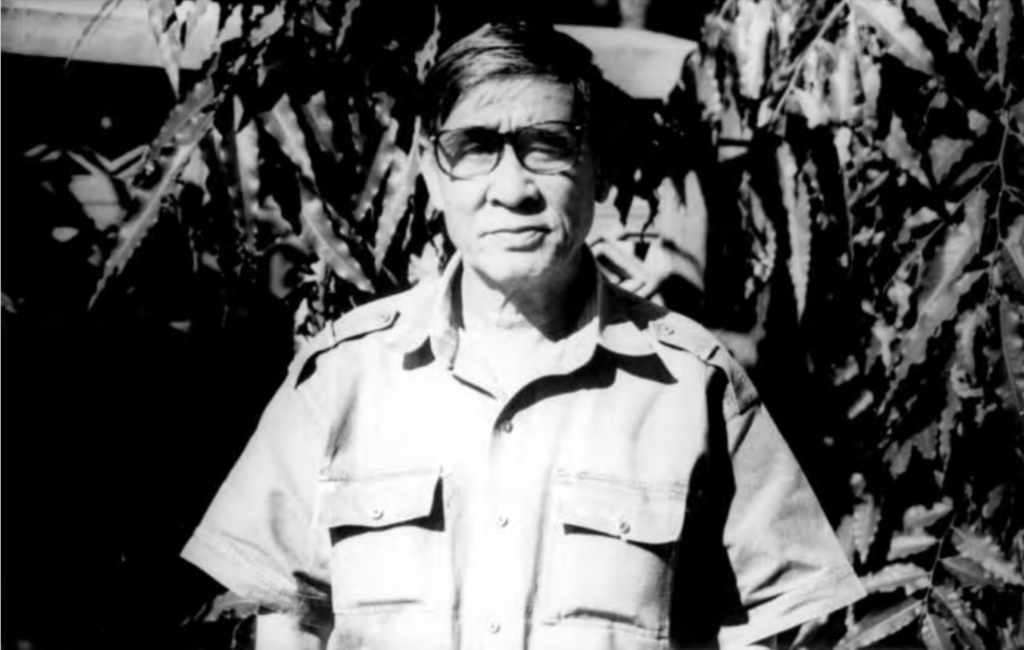
Ajahn Sintorn Chaichakan (1962-2005), founder of the Shivagakomarpaj Traditional Medicine Hospital in 1998. 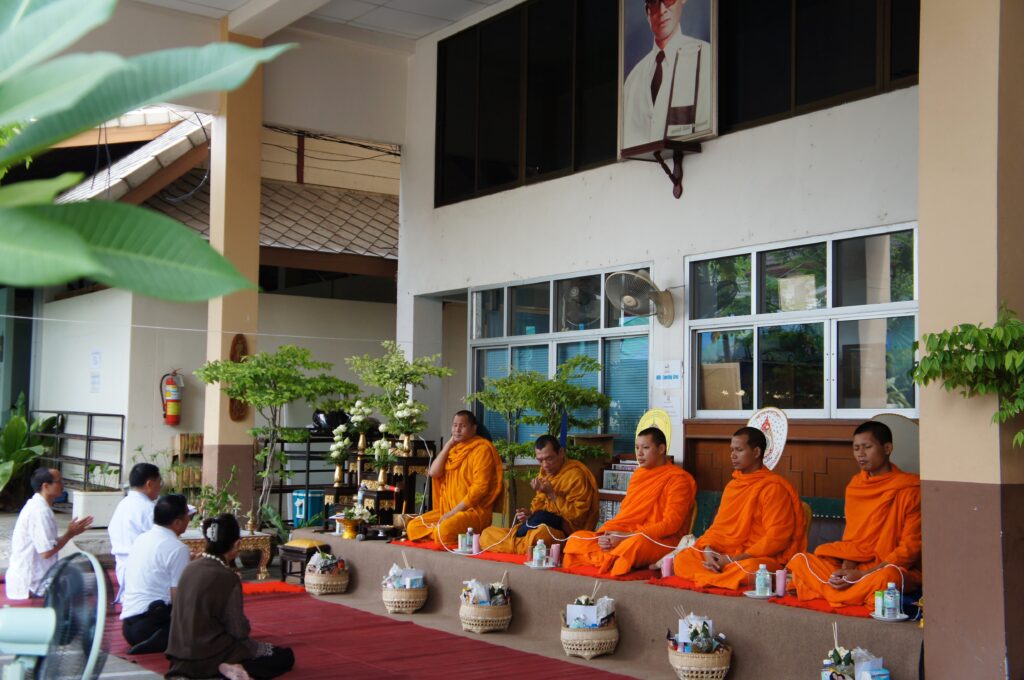
Monks chanting blessings for purification outside the main building of Shivagakomarpaj. 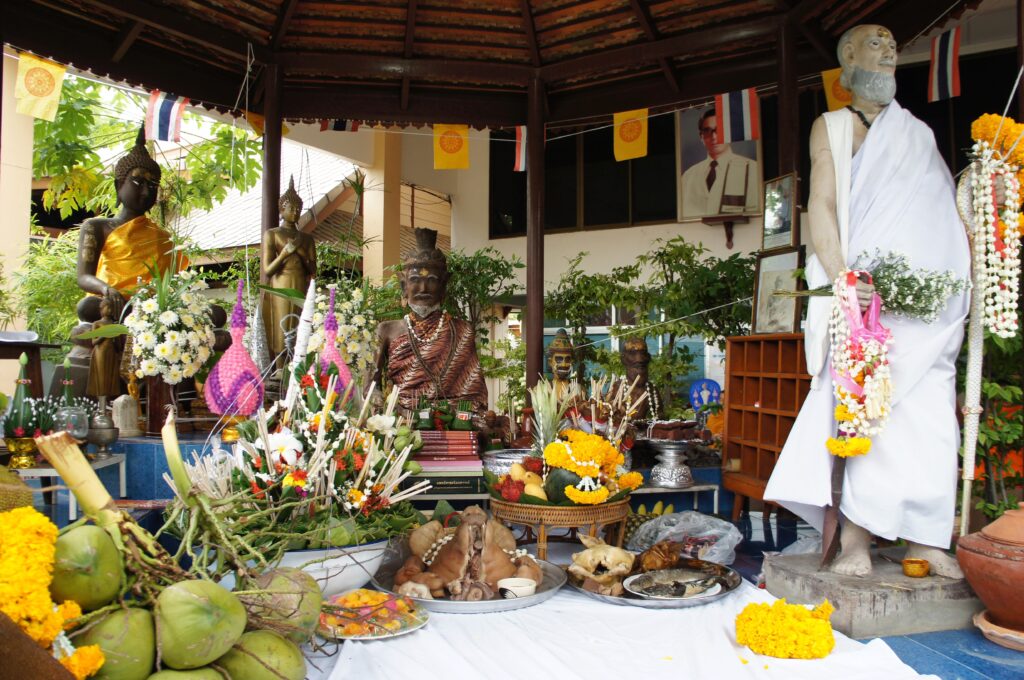
Main altar with offerings for the 50th anniversary wai khru. 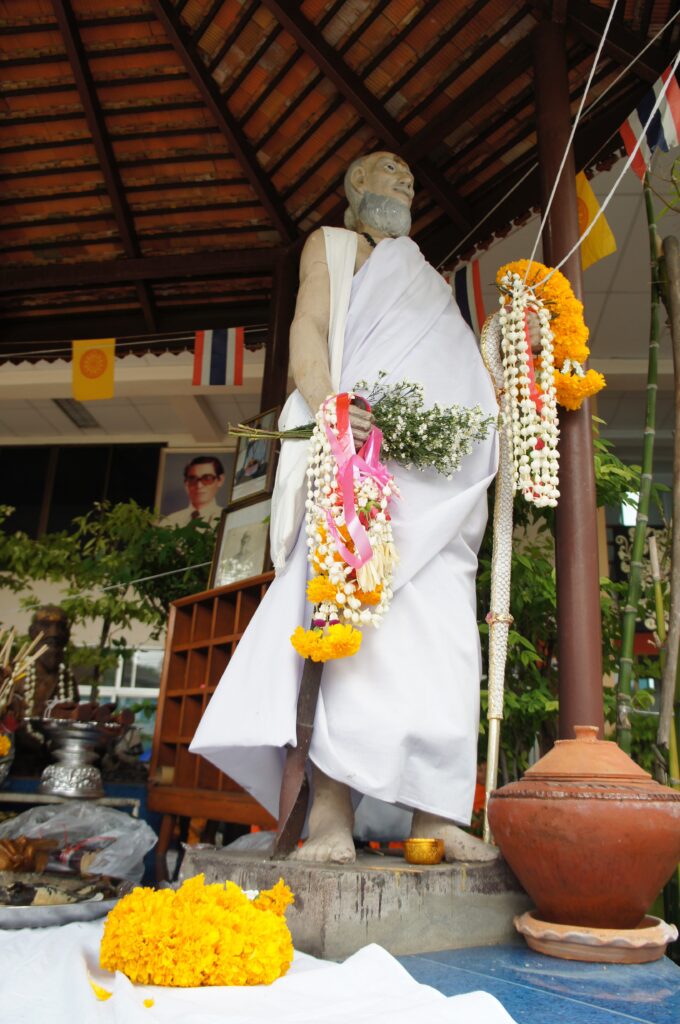
Detail of Jīvaka statue from the altar. 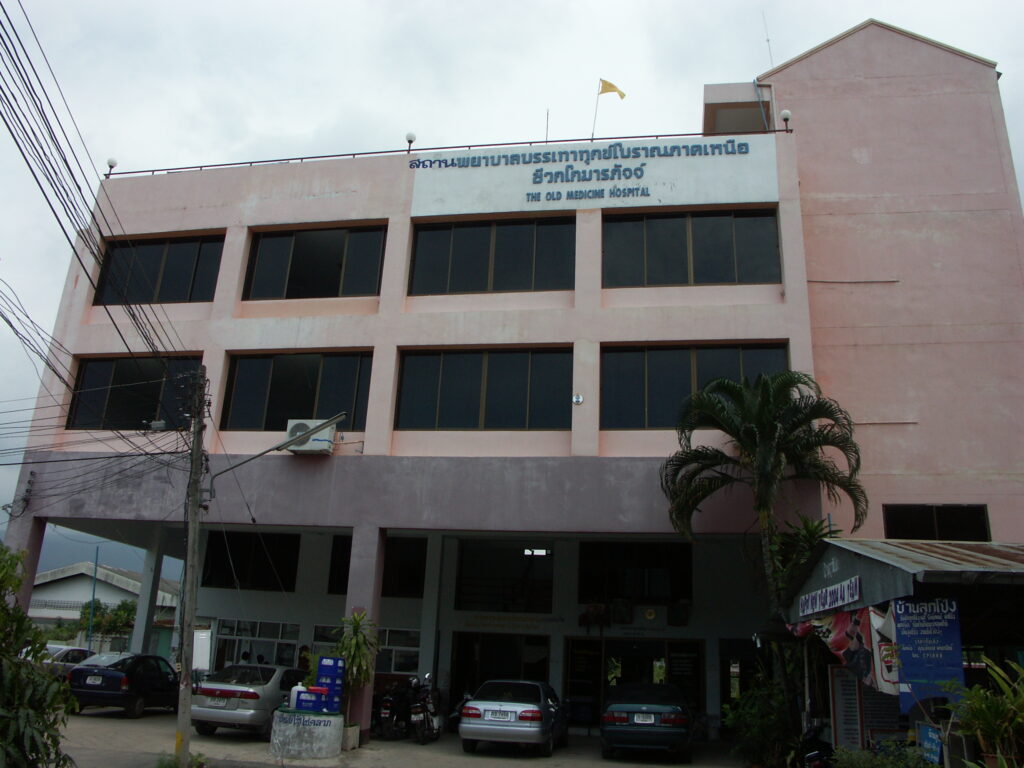
The herbal medicine facility at the “Old Medicine Hospital.” 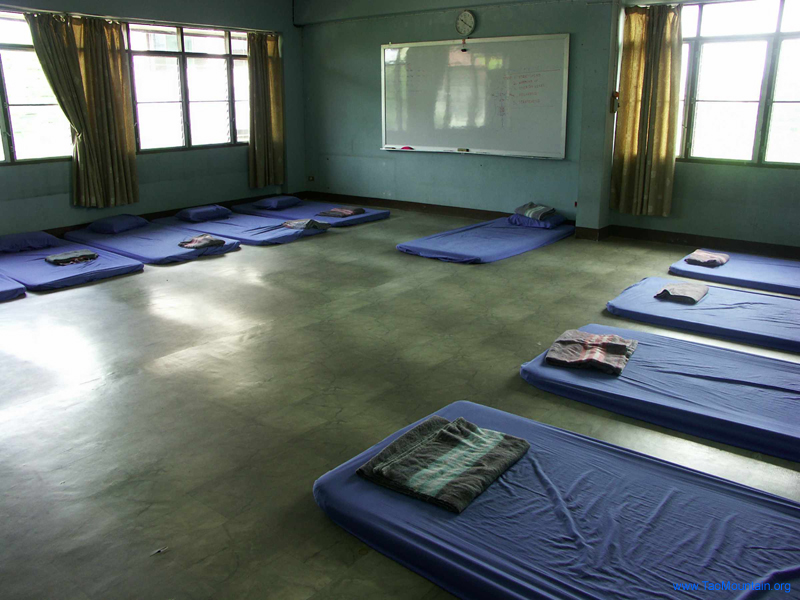
A classroom at Shivagakomarpaj where massage is usually practiced in a
communal setting.
Google Street View
References
- Salguero, C. Pierce. 2006. The Spiritual Healing of Traditional Thailand. Forres, Scotland: Findhorn Press.
- Salguero, C. Pierce. 2016. Traditional Thai Medicine: Buddhism, Animism, Ayurveda. White Lotus Press.
- Salguero, C. Pierce. 2017. “Honoring the Teachers, Constructing the Tradition: The Role of History and Religion in the Waikrū Ceremony of a Thai Traditional Medicine Hospital,” in Hans Pols, Michele Thompson, and John Harley Warner (eds.), Translating the Body: Medical Education in Southeast Asia. Singapore: National University of Singapore Press.
External Links
- “Thai Massage School Shivagakomarpaj & Old Medicine Hospital” Thai Massage School Shivagakomarpaj & Old Medicine Hospital. http://thaimassageschool.ac.th/
Credits
With the exception of the last paragraph, the above text was copied from Salguero 2006, with edits. Photos are by Pierce Salguero, and derived from Salguero 2006 and 2017.
Notes
[1] Ajahn is an honorific title given to respected teachers, which could be translated as “Master.”
